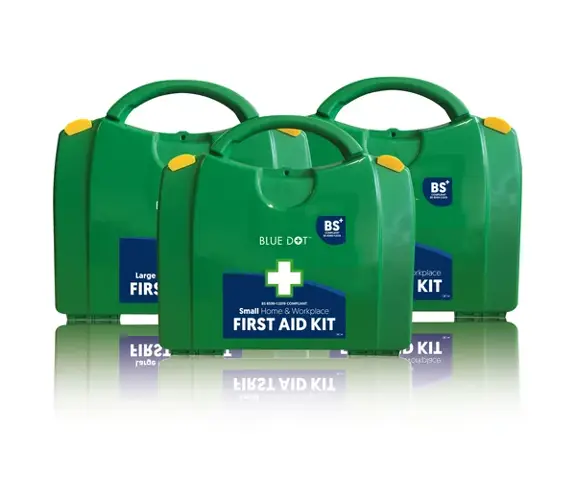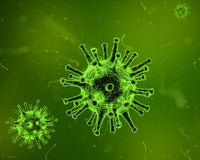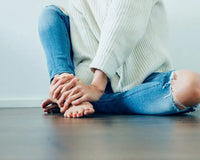A Guide To First Aid Kits
We have all suffered an injury in our life - from common to serious, scrape to sprain, first aid kits act as a safety net to allow direct treatment of the patient, reducing the severity of the injury and decreasing the chance of infection.
At First Aid Warehouse, we are proud to be the UK’s premier supplier for high quality first aid kits, with a wide range supplying medical professionals, the Care Sector and the general public.
They have been vital in treating injuries across the world since the 19th century, but it’s not always easy to know where to start, and what exactly they can help with. This is our guide to first aid kits, which will run you through any questions you may have.
What is a first aid kit, and why do we have them?
A first aid kit is the essential set of equipment to aid injuries and lessen the severity and pain for the patient. Since their first development in 1888, kits have been commercialised to meet new needs, and are customised for home, school, travel, sports and the workplace.
The most common area to find a first aid kit is in the workplace, as health & safety awareness and training has continued to increase. The Health and Safety First Aid regulations 1981 state that “An employer shall provide such equipment and facilities as are adequate in the circumstances for enabling first-aid to be rendered to their employees if they are injured or become ill at work.”
If you’re looking to supply your work with a first aid kit, such as an office or shop, our workplace collection contains kits detailed in British Standard BS8599-1. This grading ensures they’re specifically designed to help you comply with the HSE code of practice and guidance, and hence fully meet your obligations under law. The standard is frequently reviewed to keep it up to date - all of our reliable, durable kits will give you peace of mind and protection against workplace injuries.
What is in a first aid kit?
There are many variations of first aid kits, but a typical medium, British Standard BS8599-1 Kit will contain:
- Guidance Leaflet
- Contents List
- Tuff Cut Scissors
- Resuscitation Aid
- 4 x Medium Sterile Dressing
- 3 x Large Sterile Dressing
- 3 x Triangular Bandage
- 3 x Eye Pad Sterile Dressings
- 3 x Waterproof Plasters (bag of 20)
- 30 x Sterile Saline Wipes
- 2 x Microporous Tape 2.5cm x 5mtr
- 9 x Pairs of Nitrile Disposable Gloves
- 3 x Finger dressing 3.5cm x 3.5cm
- 2 x Thermal Blankets 204cm x 140cm
- 2 x Burn Dressing
- 2 x Conforming Bandage 7.5cm x 4.5mtr

Which first aid kit should I buy?
The first aid kit you should select will be dependent on your requirements and location of use - at First Aid Warehouse, we stock a wide variety of kits to cover different needs.
For example, if you are a delivery driver, you may need a portable, compact Vehicle First Aid Kit - our vehicle kit selection ranges from compact domestic kits for cars, to larger, BS8599-2 compliant motorist first aid kits.
This collection of kits has been professionally constructed to comply with the British Standard of first aid cover for motorists, and all vehicle kits we offer contain essential items including plasters, varied dressings, safety gloves, scissors and sterile cleansing wipes.
The contents and size of these kits differ from a sports first aid kit, which have been exclusively designed to aid sporting injuries and keep players on the pitch, court and track. From our grab bags to full size kits, our sports medical bags are equipped with specialised equipment like foil blankets, instant cold pack bandages, deep heat spray and more, ideal for a range of teams and sports.
If you’re supplying a school or nursery, we also have specialised kits suited for common injuries amongst children. Our compact Nursery Kit features sets of children’s plasters, eye pads and smaller bandages amongst other unique equipment with a focus on minor injuries and wound care.
See our full school range, to select a kit with size, contents and price suitable for your needs.
We also stock a collection of burn kits, which feature Antidote Gel and various other remedies, ointments and creams to help cool mild to moderate burns.
When will I need a first aid kit?
Unfortunately, in school, work and life, PPE cannot always prevent hazards or accidents leading to a variety of injuries. The good news, however, is that first aid kits provide cover for many of them, and will help to reduce the pain and severity of the injury for the patient.
It’s important to know the most common injuries that you may come across, and how to treat them with a first aid kit:
Cut or Scrape
Equipment needed: Clean cloth, cleansing wipes, antibiotic ointment/cream, bandage or gauze and adhesive tape
How to treat injury: Check for bleeding, and press firmly over the site until it stops – anywhere between three to 15 minutes. Clean with lukewarm water and apply antibiotic ointment/cream, then cover with a bandage (or gauze and adhesive tape).
Apply more ointment/cream and a new bandage daily, until the cut heals.
Burn
Equipment needed: Wet cloth, bandage
How to treat injury: Place the affected area under cold water, or apply a cold, wet paper cloth and burn gel to cool the affected area. Cover any small blisters with a bandage or gauze and tape.
If the burns are larger than ¼ inch, or on the face, hands or genitals, call a doctor as soon as you can. Redness, swelling, tenderness or discharge can be signs of infection so keep a close eye on the affected area.
Nose Bleed
Equipment needed: Paper towel, ice pack
How to treat injury: Sit the patient upright, loosen any tight clothing from their upper body and don’t tilt their head back. Pinch the lower end of their nose, to close the nostrils and have them lean forward while applying constant pressure for five to ten minutes.
If the nose bleed was caused by impact, reduce the swelling by holding an ice pack to the bridge of the nostrils once the bleeding slows. Call a doctor or visit A&E if the bleeding persists for more than ten minutes, to check for breakage.
Strain, Sprain or Tear
Equipment needed: Ice pack
How to treat the injury: The first step is to immobilise the affected area, elevate/raise it, and apply ice and compression to reduce swelling. If the patient is in severe pain, or is suffering from discolouration or excessive swelling, they will require a trip to the hospital.
How do I store the first aid kit?
Most first aid kits will come in one of two varieties of shape. The first, and most common, is a durable box with an easy-to-grab handle, making it ideal to carry when getting quickly to the patient. This type of kit is likely to be thinner, in a square shape, and can be stored easily straightforwardly. The second most common shape of kit is a more rectangular zipped bag, often used for travel.
Whichever kit you use, and where you store it, it’s important to stick to these general practices:
- Ensure the box is locked, in a cool and dry environment
- Keep the kit out of reach of children
- Store the kit in a place that is within easy access
How do I maintain my first aid kit?
All kits that we supply are durable and can withstand weather and other testing conditions - so the most important factor in looking after your first aid kit is maintenance of supplies. Ensure by using the kit guide that all supplies are current and replenished after use, as well as replacing any expired medications or items by regularly checking their expiry date. Try to do this on a monthly basis - having a dedicated checker or a rota helps with this process.
At First Aid Warehouse you’ll find a range of first aid kits, and all the items you need to complete one. We can also offer discounts for bulk and repeat orders. Contact us for further details.



